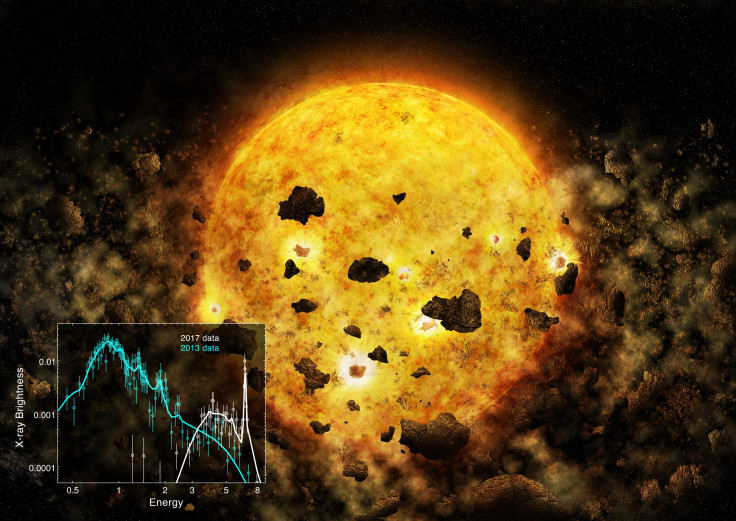Young Star Seen Gobbling Up Baby Planets 450 Light-Years Away

After observing baby planets in the process of formation, a group of researchers may have spotted a young star gobbling up new-born planets, some 450 light years away from Earth.
It is already well-established that hot young stars can devour and annihilate planets, be it a rocky-world like ours or a gas-giant. However, the phenomenon has not been observed, not at least directly.
This might soon change as a team of scientists using NASA’s Chandra X-ray telescope might have captured the evidence of young planets being sucked up by a star named RW Aur A.
Located in the Taurus-Auriga Dark Clouds – a nursery of thousands of young stars, RW Aur A forms a binary system with companion RW Aur B. The star, which is younger than the sun but just as massive, has been under observation for nearly a century and has drawn a lot of attention due to its weird behavior.
Essentially, over the years, scientists have noted strange dimming patterns in the light of this star. Its brightness decreases in every decade or two and then goes back to normal after some time. The puzzling pattern became more complex when the dimming phase started occurring more frequently and lasted longer than ever before.
Initially, the dips used to last for a month or so, but since 2011, as many as three dimming events have been noted, with each one taking more than six months to return to the original state of brightness.
To find the exact reason behind this behavior, the team took optical and X-ray observations using Chandra during the brief periods of brightness in 2015 and 2017. Then, they analyzed the results and compared them to the observations taken during a relatively bright phase of 2013.
The whole effort revealed that a thick veil of gas and dust keeps on obscuring the light of the star from time to time. They came to this conclusion after noting the change in the intensity of X-rays emanating out from the hot atmosphere of the star in question.
More importantly, the most recent set of observations, from the year 2017, showed that the veil of dense gas and dust had 10 times more iron than in 2013.
This could be the outcome of a planetary collision in the proximity of this star. According to the researchers involved in the work, the increased amount of iron could be released into the star’s disk following a smash-up between two iron-rich infant planetary bodies – one of which would be big enough to be characterized as a planet.
As a result of this encounter, the baby planets’ debris would have fallen into the star, which would have released the iron and other material contributing to dense, light-dimming veil.
“If our interpretation of the data is correct, this would be the first time that we directly observe a young star devouring a planet or planets,” Hans Moritz Guenther, the lead author behind the study, said in a statement. “Much effort currently goes into learning about exoplanets and how they form, so it is obviously very important to see how young planets could be destroyed in interactions with their host stars and other young planets, and what factors determine if they survive."
© Copyright IBTimes 2024. All rights reserved.





















